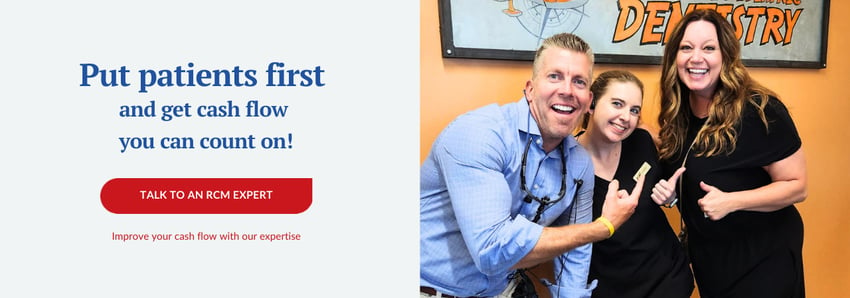Examining CDT Code D2940: Do you place protective restorations at the emergency appointment?


A patient presents for a crown preparation once the decay is removed the findings are that the decay extends into the pulp. The doctor refers the patient to an endodontist for root canal therapy treatment. The patient is indecisive about whether to proceed with the root canal therapy vs. having the tooth extracted and an implant placed and restored with a crown.
Restorative material is placed for the purpose of preventing the tooth from fracturing further and also to protect the tooth from pain.
We all run into these types of patient appointments where a temporary restoration is placed for various scenarios. So, how is the placement of this restorative material documented and reported to the payer?
Dental ClaimSupport has developed our educational platform, Dental Claims Academy to answer questions such as these. Coding and documentation are paramount for submitting accurate insurance claims. As a trusted dental billing partner, we've seen how educational tools like Dental Claims Academy can help dental teams stay up to date on coding best practices.
In this article, we will examine CDT code D2940 and answer the question: Do you place protective restorations at the emergency appointment? We will also cover how to bill for code D2940. This knowledge will help you submit more accurate insurance claims, leading to more insurance revenue for your dental practice.
What is CDT code D2940?
This type of restoration is accurately documented and reported to the payer using code D2940 which was revised a few years ago. The previous code nomenclature defined this code as a sedative filling. The current code language includes a revised nomenclature and a descriptor.
D2940 protective restoration
Direct placement of a restorative material to protect tooth and/or tissue form. This procedure may be used to relieve pain, promote healing, or prevent further deterioration. Not to be used for endodontic access closure, or as a base or liner under a restoration.
The nomenclature defines D2940 as a protective restoration. The current descriptor further defines the intended use of the code to give the treating provider guidance for proper coding.
It is a direct restoration, meaning that the restoration is placed directly on the tooth, not fabricated outside the mouth then placed on the tooth.
Related: CDT Codes: Current Dental Terminology explained
The type of restorative material is not specified. Any type of restorative material may be used when the purpose of the placement is to protect the tooth and/or tissue form.
Tissue form protection could be filling a deep mesial fracture to keep the tissue from growing into the fractured portion of the tooth.
The descriptor then goes on to describe that the restoration may be used to relieve pain, perhaps in an emergency situation; promote healing as in the situation where the decay may be close to the nerve causing discomfort; or further deterioration of the tooth perhaps in the instance, the tooth is badly fractured and the restoration is placed to prevent further fracturing of the tooth until definitive treatment may be performed.
It is also important to note the descriptor makes it clear what procedures this code is not appropriate for. Code D2940 does not document and report a restoration placed for the purpose of closing an endodontic access hole. Nor is D2940 to be used to document the placement of a base or liner.
Per CDT guidelines, placement of a base or liner is inclusive to the restoration and is not a separate procedure.
Documentation of protective restoration dental procedures
For a protective restoration, be sure your clinical documentation fully supports the medical/dental necessity of the procedure. Be specific in your documentation stating the condition of the tooth requiring the protective restoration.
In other words, specificity in why it is required; the findings or diagnosis. What purpose does it serve such as to relieve pain in an emergency situation? Also, include the treatment planned, as this is not a definitive treatment, and any other pertinent information specific to this patient’s treatment.
Is a protective restoration reimbursed by dental plans?
This is always a question of concern as a dentist should get paid for the services rendered. While code D2940 is not a “by report” code, meaning a narrative is not required, it is a good idea to include a narrative describing why the procedure is necessary for efficient claims adjudication (processing).
A quick review of a few dental plans and a few PPO processing policy manuals indicate that coverage varies greatly. Some plans may only pay for D2940 protective restoration when placed for pain relief in an emergency situation. Some plans consider code D2940 to be what is known as a take back code.
What is a take back code?
When a dental plan considers a procedure to be a take back, it means that if D2940 is performed and paid by the plan then a definitive restoration is placed within a predefined time frame, then the amount paid for the definitive restoration is reduced by the amount paid for D2940. A take back code is something you should be aware of for this procedure.
Don't let coding errors keep your dental practice from being paid
This information is crucial when it comes to running your dental practice. Proper coding is directly correlated to not only the ethical standard your dental practice is maintaining but also the amount of revenue you are bringing in.
Your dental practice receives sometimes half of its overall revenue from insurance claims, so the cash flow of your dental practice depends on accurate claim submission.
Dental Claims Academy offers courses and webinars covering billing topics that can help your team stay up to date on difficult subjects such as CDT coding. Enroll your team by visiting our website.
Related Posts
Dental revenue resources from Dental Cashflow Solutions (formerly Dental Claim Support)

